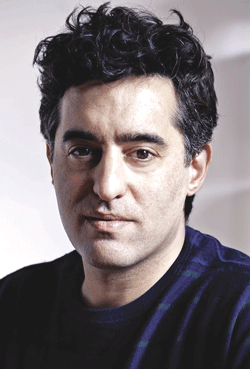Reviewed by NEAL GENDLER
Nathan Englander continues to go from strength to strength, packing new proof of his distinctive talent into this slender package of eight short stories.
Englander burst to stardom in 1999, with a short-story collection, For the Relief of Unbearable Urges. The title story, about an Orthodox man who seeks rabbinical approval to go to a prostitute because his wife denies him sex, has an ending worthy of O. Henry, famed since the first decade of the last century for witty short stories with a twist at the end.
The stories in What We Talk About When We Talk About Anne Frank are equally unusual and sprinkled with humor, irony, absurdity and surprises. Englander, who was raised Orthodox and became secular while living in Jerusalem, either sees people, life and the world rather differently than do the rest of us, or he sees more deeply — often darkly — and finds unusual ways of communicating his vision.

Seven of these stories are very Jewish, but Englander-ishly offbeat. The title piece features a pot-smoking frum (devout) couple (how else to cope with 10 daughters in tight Israeli quarters?) visiting the wife’s now-secular best friend from their years in a girls’ yeshiva. The couples discuss where to hide and who might hide them from a Shoah-like persecution.
The secular husband describes the religious pair as going from Orthodox to ultra-Orthodox, which he says “sounds like a repackaged detergent — Orthodox Ultra, now with more deep-healing power.”
Another story, “Camp Sundown,” has youngsters on one side of a lake and an elderhostel of kvetching geriatrics on the other. Eight of the oldsters are convinced that a man who comes to play bridge is a former concentration-camp guard. The harried director, Josh, observes that “every summer, the old people grow smaller as the children grow big.” He “has decided that there is only so much height in the world, and the inches must change hands.”
Long and engrossing, “Sister Hills” tells of an Israeli woman living primitively on a Samaria hilltop who becomes widowed by the 1973 war. The infant daughter of her only neighbor, on the other hilltop, falls deathly ill. The mother believes she’s to blame because of some sin and, following a superstition, sells the girl to the widow, who renames her.
Bits of Israeli history, Israeli stubbornness and Jewish argumentation combine with compassion for the widow, and for the mother and child who become victims of the widow’s logic.
In another tale, a group of boys learns self-defense moves from a Russian immigrant but still must turn to a reluctant young man who’s the “biggest Jew in town” and “the toughest Jew we knew” to defend them against an anti-Semitic bully.
These are no conventional stories, and some have unconventional structures, requiring a page or two to catch on. One is a personal and family history told in numbered paragraphs. A story about a once-famous writer emphasizes his present irrelevance by identifying him only as “Author,” without an article. For example, “The woman is talking to Author.” In some stories, it’s occasionally difficult to discern who’s talking or acting; Englander might help his readers by showing a bit more concern about antecedents.
Although one needn’t be Jewish to enjoy Englander’s stories, most have rhythms or references almost implicitly understood by Jews. A smattering of Hebrew words — most of them familiar — happily lack the interrupting distraction of translation.
Englander’s stories contain many questions of identity — individual identity, family identity, group identity and Jewish identity, including Jewish observance or lack of it.
Are these stories Englander’s way of dealing with his own identity problems, or just one fairly well-adjusted, even brilliant, writer’s thoughts about life? Either way, we can applaud his rare combination of observation, imagination and skill.
***
Neal Gendler is a Minneapolis writer and editor.
(American Jewish World, 5.11.12)



















